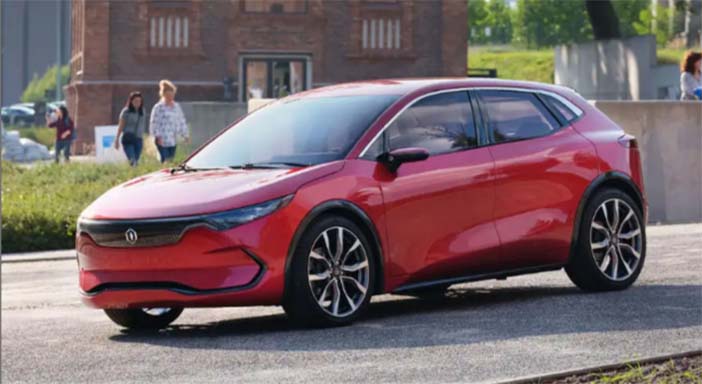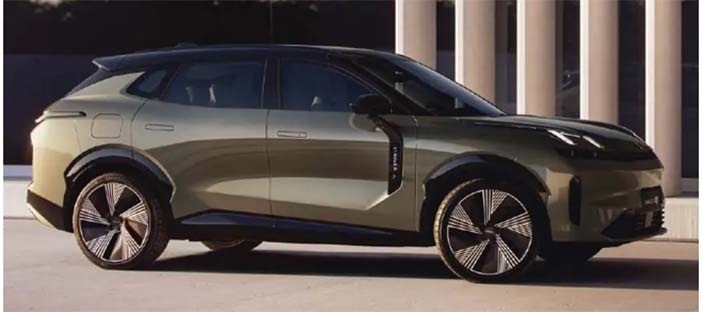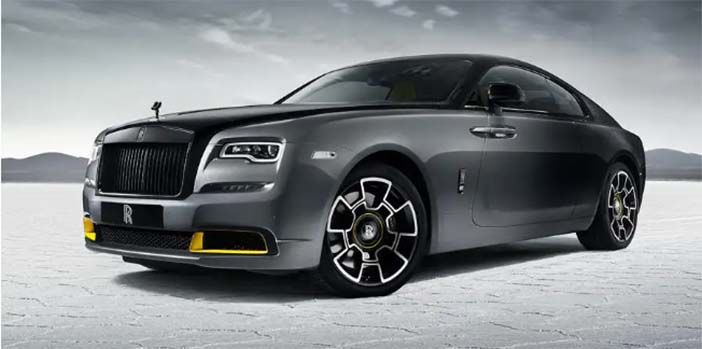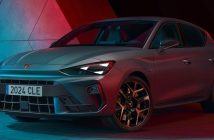+++ CUPRA is readying a mix of larger vehicles to target the North American market as it looks to grow its global presence. These were confirmed by CEO Wayne Griffiths to ride on the Volkswagen Group’s SSP platform, which is effectively a fusion of the MEB and the PPE. They will arrive towards the end of the decade, given that the SSP platform isn’t due until 2028 at the earliest. They will be electrically powered, as Cupra “will not be looking to go to America with combustion cars”, Griffiths said. The Spanish brand’s last ICE car will be the Terramar, A SUV due in 2024. A near-2030 estimate for its North American push was again backed by Griffiths, who confirmed entrance into the market “will be linked to the timetable of Cupra becoming a fully electric brand”. This has already been cited as “by 2030”. Speaking about the plans, Griffiths said: “We’re currently testing the brand there. We think Americans will love Cupra’s design and performance”. Asked why it can’t head over now with the Volkswagen ID.3-based Born, he said: “You need a car in the US that’s fit for the US and electric. An American electric car is generally bigger, so it will be a next generation of electric cars that would be based on the SSP platform from Volkswagen. So in terms of technology, there’s a timing aspect, and the other aspect is that we have to afford to do it. The investments for making cars ready for America are considerable, and I think we need to be stronger first in Europe and make sure we’ve done our homework. We need to have that 3-4% of market share before we start looking for new markets. So our priority will be to get Cupra up and running first in Europe. The US story is still very early days”. +++
+++ FORD is poised to resurrect the hallowed Capri nameplate for its second electric crossover on Volkswagen’s MEB platform. Following the unveiling of the new Explorer, it has emerged that car’s twin (due to be revealed early next year) is tipped to take its name from the sports coupé Ford sold in huge numbers across Europe from 1968 to 1986. Autointernationaal.nl first reported in 2019 that the Capri name was in the frame for a revival, and now, in an exclusive interview with the firm’s chief European designer Amko Leenarts, has heard just how important historic nameplates will be for Ford as it progresses with its electric revolution. Leenarts spoke excitedly and passionately about the next stage in the company’s evolution as he showed us around his slick, expansive Merkenich Design Studio, just down the road from the company’s Cologne factory. He joined Ford 11 years ago (when its range was several times larger than it will be by 2025) and is now charged with leading the brand into its bold new electric future, starting with the Explorer. Importantly, he said, Ford’s redeploying of historic names does not herald the advent of nostalgic styling cues: “Retro designs aren’t moving us forward. It’s always about totally new interpretation: that’s what makes it interesting”. The Explorer, for example, is an entirely different proposition from its much larger US-market namesake but, highlighted Leenarts, has been designed with the same focus on active customers and functionality. “It’s not a surprise that that is the first car in our Adventurous Spirit range”, he said. He did not offer any hints as to which other Ford names are up for revival, nor did he indicate what qualifies an old badge for a comeback, but he revels in “the tension between something that’s got the equity of an older name and the new interpretation”. It’s a topic that will have been debated hotly in Ford’s customer focus groups over the past few years, since the firm reused the names Puma for a crossover and Mustang for an electric family SUV. Ultimately, thinks Leenarts, “the public loves that we’re bringing nameplates to new territories”, because they tap into a “unique perspective that nobody else has”. While the names may be familiar, though, the designs really won’t be. As the first of a new breed of Fords conceived under the Adventurous Spirit banner, the Explorer sets the tone for every bespoke EV that will follow it over the coming years. Direct references to previous Ford models are few and far between, both inside and out. Likewise, the new-generation Capri will be a higher-riding proposition, and will gain a pair of extra doors in line with its family crossover billing. Specifications will no doubt be broadly identical to the Explorer, which offers up to 340 hp and a maximum range of more than 480 km. Leenarts explained that the onset of electrification provided an opportunity to cater to evolving customer requirements with what’s arguably the biggest shift in Ford design since the New Edge ethos of the late 1990s: “We started researching first: how do customers look at us? I felt personally that we were looking too positively on our own brand; we needed a health check on where we really were. And that’s why we did work with the customers. What was really hurting me was them saying we were boring. And that was the part I got really engaged in. I said: ‘Okay, we have to come up with unique proposals: car designs that are clearly differentiated, that offer a unique perspective that nobody else has’ ”. That the Explorer looks nothing like the Puma or Kuga, for example, is testament to Ford’s commitment to conveying its new American-flavoured image and serves as proof for the enhanced freedom afforded to car designers by flat-floored, engineless EV architectures. “Electric car design language for us automatically came with simplification: cleaning it up, making sure that we get not only the bold proportions and stance, the language much more simplistic, but with that it almost feels more expensive, more premium, more approachable as well. So we’re not doing aggressive cars here. We’re actually doing cars that you can love easily”, summarizes Leenarts. “I want to make a product that’s exciting. I want to make a product that you really love. And in order to do that, it needs to have a beautiful sculpture; it has to have a couple of details that really stand out but are, again, easy to love”. Asked whether there are any pitfalls of EV design that he tries to avoid, he says: “I think there are some products out there that try a little bit too hard, and in the end it gets to something that’s almost an appliance design. So a pitfall is appliance design. Don’t make it look like an appliance; it’s got to be sexy”. +++
+++ Luxury brand GENESIS will launch a ranch of high-performance electric vehicles, with quicker versions of its cars in development as it bids to establish itself as a rival for Audi, BMW and Mercedes, and potentially further underlining the production potential of its trio of X concepts. Confirming that Genesis will pursue the development of high-power electric cars, Mark Choi, head of product planning for Genesis, said: “As a group, we are looking at the most efficient ways of developing electric cars as we approach the new era, but at Genesis, it is clear that we want to be differentiated. We can’t just carry over from our sister brands. “We want to separate ourselves on the more high-performance side. We are not keen on a high-performance sub-brand or anything like that, but we do talk about developing ‘effortless’ powertrains: enough power to be enjoyable in all circumstances and which satisfies the luxury experience”. Highlighting the striking X Coupé, Convertible and Speedium family of concepts, and their potential for being made, Choi added: “We’ve had great feedback, and we’re looking into it. The next steps are to decide if it’s first possible and then feasible”. Talking about feasibility of the concept cars making production, head of design Sangyup Lee, who spoke of his desire to launch a halo coupé, said: “The flush shapes we want for the cars are not easy to make in production, especially around the A- and B-pillar. These are challenging engineering details that we need to be perfected before we can proceed”. Genesis has committed to launch only new electric vehicles from 2025, creating a line-up of at least 6 cars thereafter. However, it will continue to offer existing combustion-engined cars from that point, phasing them out only according to differing local regulations up until 2030, when it will be fully electric. It has pledged to be carbon neutral as a firm by 2035. +++
+++ Polish electric vehicle start-up IZERA has announced that its first 3 models, all based on a Geely platform, will be designed by Pininfarina. Izera was founded in 2020 with the backing of the Polish government and plans to launch an electric hatchback, estate and SUV in late 2025, following the construction of a factory in Jaworzno, southern Poland. Pininfarina will be responsible for evolving the design of the trio’s exterior, interior and infotainment from the Z100 SUV and T100 hatchback concepts shown at the brand’s launch. They will be based on Chinese giant Geely’s Sustainable Experience Architecture (SEA) as part of a tie-up announced late last year. This has already been used for cars as varied as the Lotus Eletre, Zeekr 001, Smart #1 and Zeekr 009, which has a claimed 820 km range. These are all premium models relative to their respective markets, hinting at Izera’s brand positioning. It promises that all of its EVs will accelerate from 0-100 kph in less than 7.0 seconds and have a range of “approximately” 440 km. Design chief Tadeusz Jelec said: “The aim of our collaboration with Pininfarina is to leverage the stylistic DNA we showcased during the public presentation of Izera prototypes in 2020; and update the brand’s unique stylistic language so that it accommodates the parameters of the platform on which our vehicles are going to be built and market trends”. Izera parent company Electromobility Poland (EMP) and Pininfarina also announced plans to establish a design internship program in Turin, Italy. Pininfarina creative senior manager Marco Giumentaro commented: “The synchrony with EMP’s team is such that we have decided to expand the collaboration to an internship programme that will bring 2 deserving students to live for 3 months the unique experience of working in the most famous Italian style centre in the world”. EMP’s mission is not only to compete in the ever-growing EV market but also to bolster Poland’s automotive and research sectors. The Jaworzno plant will create around 2.400 jobs, with more likely to come as the company grows and Izera nears its market launch. The Izera EVs would be the first mass-market cars from a Polish brand since FSO ceased production of the Lanos in 2008. +++

+++ LYNK & CO has fully revealed its new 08 hybrid SUV ahead of its launch event in Shanghai on 25 March. A sibling model of the next-generation Volvo XC60, the Geely-owned brand’s 7th model will be sold in China from the second half of 2023. It’s then expected to be sold in select foreign markets, including in Europe, from 2024. It swaps the low-slung, 2-door silhouette of 2022’s The Next Day concept for a traditional crossover bodystyle. However, it carries over the concept’s signature led headlights within a near-grilleless front fascia that gives it away as an electrified model. Moving round to the side, the door handles sit flush with the bodywork in the name of reducing drag and the wheel arches are clad in black plastic with a glossy finish. At the rear, the led lights wrap around into the rear wings, while a sporty diffuser features below the bumper. As with the forthcoming XC60, the 08 is based on Geely’s CMA 2.0 platform and is expected to be available with 2 versions of the firm’s E-Motive hybrid system. Known internally under the codename DX11, this comprises a turbocharged 1.5-litre 3-cylinder petrol engine and a 3-speed Dedicated Hybrid Transmission (DHT) in combination with an electric motor and battery of varying power and capacities. 2 versions of the E-Motive system are planned. The first, called EM-F, is a parallel hybrid set-up in which the petrol engine charges a small battery that in turn powers an electric motor for a limited electric-only range. The second, called EM-P, is a plug-in hybrid set-up that allows the battery to be charged at up to 50 kW and offers an extended electric-only range. The so-called Nordthor 1.5-litre petrol engine claims to return fuel savings of up to 15% over Lynk&Co’s existing mild-hybrid and plug-in hybrid systems and has a thermal efficiency of up to 44.2%. Chinese-market versions of the 08 will feature a new in-car operating system developed under a partnership between Geely and Chinese smartphone company Meizu. Further details about the new model will be made available at its launch event later this week. +++

+++ The ROLLS-ROYCE Black Badge Wraith Black Arrow has been revealed as the British firm’s final ever V12-powered coupé, ahead of its switch to all-electric power. Limited to just 12 units, which have already been sold to customers around the world, the Black Arrow sees out 10 years of Wraith production. It has been described by Rolls-Royce as a “fitting finale” for the 2-door coupé. The Black Arrow follows the Rolls-Royce Wraith Black Badge, which was launched in 2016, with the traditional Rolls-Royce special edition conventions of providing drivers with uprated power, brakes and suspension, as well as a unique interior. Finished almost entirely in black and silver, the Black Arrow draws inspiration from the famous, 7-tonne, 8-wheeled, dual-V12-powered Thunderbolt of 1938, which broke the land speed record, hitting a top speed of 574 kph. The new Wraith also gains a glass-infused paint finish. Its bumper inserts, wheel pinstripes, V-struts, Spirit of Ecstasy and engravings are all finished in yellow, paying homage to the Thunderbird. Inside, the Black Arrow is equipped with open-pore wood door lining, which Rolls-Royce says represents the Bonneville Salt Flats, where the Thunderbolt set its record. Meanwhile, the seats, armrests, transmission tunnel and lower dashboard are all finished in black club leather, while the steering wheel, seat tops and headrests are coloured yellow. The roof lining also has the highest number of LED lights ever used in a Rolls-Royce, with 2.117 fibreoptic ‘stars’, arranged by hand and depicting the stars of the Milky Way just resembling the exact night sky from 16 September 1938. Rolls-Royce hasn’t revealed technical information for the car, nor a price tag. The Wraith Black Badge packs 632 hp and 865 Nm from its twin-turbocharged V12, so expect the Black Arrow to offer a similar level of performance. “The Wraith is one of the most significant and influential cars we have ever made at Goodwood. Its extraordinary power, performance and presence opened the Rolls-Royce brand to an entirely new group of clients”, said Torsten Müller-Ötvös, Rolls-Royce CEO. “As the last examples of this landmark motor car get ready to leave Goodwood, we commemorate Wraith’s status as the last series V12 coupé we will ever make. Both the Black Badge Wraith Black Arrow and its inspiration, the V12-powered land-speed-record-holding Thunderbolt of the Thirties, represent the culmination of many long years of achievement and the end of their respective eras. This magnificent final V12 coupé collection captures both the significance and spirit of Wraith through the marque’s hallmark and peerless bespoke capabilities. A fitting finale for this transformative motor car”. +++

+++ SEAT won’t release an electric car while Cupra is selling them, for fear of cannibalising sales, and will instead focus on combustion cars and micro-mobility. The news, confirmed by Seat and Cupra CEO Wayne Griffiths, means Seat will not launch its hotly tipped first electric model before 2026, if at all, given that Cupra will release 2 new EVs over the next 2 years: the Tavascan in 2024 and a production version of the Urban Rebel concept in 2025. Instead, Seat will focus on its combustion offerings and “electric micro-mobility”, building on its Seat Mó electric scooter. The firm is also looking to grow the business with a 4-wheeled variant too, as first previewed by the Minimo at the end of the last decade before the model was shelved due to the Covid pandemic. “The new electric cars we are focused on at the moment are for Cupra”, said Griffiths at the group’s annual press conference in Barcelona. “We cannot electrify both brands at once. Seat is combustion. Cupra is BEV. I think the idea that the 2 brands complement each other, being in the market at the same time, particularly during this transition phase, makes a lot of sense”. Speaking about the future of the Seat brand, especially regarding future car models, he added: “We are working on a strategy for micro-mobility to build a 4-wheeler (the Minimo) and decisions on the future electrification of the Seat brand in terms of cars will be taken at a later date”. The move comes as the young Cupra brand posted its best ever results in 2022, with 150.000 cars sold; almost double its entire sales in its first 4 years. This led the Seat group to post operating profits of €179 million; its first time in the black since 2019. The firm also recorded a turnover of €10.5 billion, the second-largest turnover in the company’s 73-year history. Cupra, which Griffiths said is expected to take around half of the group’s overall sales this year, is targeting 500.000 sales a year in the mid-term, as it aims to become one of the “top 100 best global brands by 2030”. +++
+++ Chinese luxury EV maker ZEEKR will add a saloon to its line-up this year as it prepares to launch in Europe this coming winter. The Geely-owned brand will launch a new model every 6 months as part of an expansion plan that targets 650.000 sales a year by 2025, CEO An Conghui told journalists and analysts in a results presentation. Expanding in Europe by the end of 2023 and to the US in 2024 will help the brand grow, An said. “Zeekr is a well-established product in China but will expand rapidly in international markets, which is our original goal”, he added. Last year, 71.941 examples of the Zeekr 001 shooting brake were sold in China. “By 2025, we will have 8 models to achieve 650.000 units. We believe this is achievable”, An said. Zeekr currently sells the 001 and 009 in the Chinese market, and deliveries of the new X compact SUV will start in the third quarter. The new saloon, codenamed CS1E (for ‘compact sedan first-generation electric’), is tipped to be longer than the X and expected to become a rival to the Tesla Model 3. An didn’t expand on which models would come to Europe, but the 001, X and CS1E look most likely. Zeekr cars so far have used Geely’s Sustainable Experience Architecture (SEA), which underpins several other EVs, including the Smart #1 that’s already on sale. The 001 was originally planned to be a new model for Lynk&Co, but Geely decided it was upmarket enough to create a new brand for its launch in 2021. Zeekr has an engineering & design team numbering around 1.000 working in Stockholm, Sweden. It took over Geely’s China Euro Vehicle Technology (CEVT) operation there, which among other tasks developed the CMA platform used by the Volvo XC40 and other Geely models. +++


